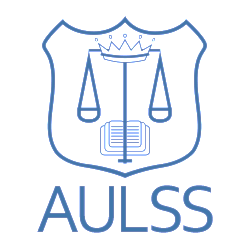Do we have Freedom of Speech? The Australian and US approach
Written By Alexander Arthur and Edited By Divya Narayan
Freedom of speech is a core value at the heart of any democratic nation enabling each individual to express their views as they see fit, yet despite the importance of this fundamental right, there are diverging methods of implementation of this right as demonstrated by the US and Australia.
Freedom of expression is the cornerstone of a democratic society and accordingly, the Human Rights Commission’s General Comment No. 34 encourages States to reinforce the right in domestic law. It is helpful to turn to international legal sources to define the scope of the right. Under Article 19 of the ICCPR, everyone shall have the right to hold opinions without interference and everyone shall have the right to freedom of expression, including the freedom to seek, receive and impart information and ideas of all kinds, and through any medium.[1] This freedom is qualified for reasons of protecting the rights and reputation of others, and for public protection.[2]
Australian Approach
Australia does not enshrine freedom of speech but has a negative right to not impose a burden on the freedom, as opposed to a positive right like is proffered in the US. In Australia, the existence of the implied freedom of political communication has been inferred from the Australian Constitution based on principles of representative and responsible government.[3] Legislation that unduly burdens this freedom is invalid and the relevant test was created in Lange v Australian Broadcasting Corporation and reformulated in McCloy v New South Wales as follows:[4]
The law must not impermissibly burden the implied freedom in structure or effect.
The purpose of the law must be compatible with notions of representative and responsible government discerned from the legislation’s object and purpose and be compatible with the maintenance of the constitutionally prescribed system of representative government; and
The law must be reasonably appropriate and adapted to achieve its legitimate object. This branches out into considerations of whether the law is suitable to its purpose, necessary to achieve its purpose, and adequate in its balance.[5]
Thus in Australia, freedom of speech is indirectly protected by striking down incursions into political freedom of communication.[6] The operation of the freedom depends on the circumstances of each case and the application of relevant interpretive principles.[7]
US Approach
The Constitution in the US differs from the Australian counterpart in many respects, but most starkly in that the First Amendment expressly protects freedom of speech as a positive right through legislation but imposes a number of exceptions. Exceptions fall into two broad categories: content-based restrictions (restricting the nature of the content itself), and content-neutral restrictions (relating to time, manner and place in which the freedom can be exercised).
For a content-based restriction to be constitutionally permissible, there must be a class of conduct that is protected and a message that is imputed, conveyed, and understood. If the legislation is unbiased, the courts will undertake a proportionality testing analogous to the three-step McCloy test to enquire whether an alternative means of regulating free speech was plausible.[8] A strict scrutiny approach assumes that the legislation is unconstitutional until proven to be proportionate and purposive.[9] The seminal case of New York Times Co v Sullivan consolidates and reaffirms the role of the First Amendment and sets a standard that any supposedly defamatory comment must be made with ‘actual malice’ before it can be regarded as a breach of freedom of speech.[10]
Time, place, and manner restrictions operate in a less restrictive way and regulate when, where and manner in which expression can take place. In determining the reasonableness of a restriction, the US Supreme Court must ensure the restrict is both content-neutral and viewpoint-neutral, and not unduly restrictive.[11]
Summary
Although both Australian and American legal systems achieve virtually the same effect in promoting and fostering free speech, the American system is potentially more cumbersome than Australia’s as the ‘top-down approach’ in curtailing an expansive right with numerous exceptions. It is interesting to note that despite the stark differences on the face of the legislation, both nations appreciate and preserve freedom of speech as a cornerstone of representative democracy.
[1] International Covenant on Civil and Political Rights (1996) signed 16 December 1966, 999 UNTS 171 (entered into force 23rd March 1976), article 19(1), 19(2).
[2] Ibid, art 19(3).
[3] Australian Constitution ss 7, 24; Lange v Australian Broadcasting Corporation (1997) 189 CLR 520.
[4] Ibid; (2015) 257 CLR 178 at [37-74] (‘McCloy’).
[5] McCloy v NSW (2015) 257 CLR 178.
[6] Australian Capital Television Pty Ltd & New South Wales v Commonwealth (1992) 177 CLR 106 at [37-38] per Mason CJ.
[7]For example, the offences relating to harassment outside of Victorian abortion clinics under s 185D of the Public Health Act 2009 (Vic) was found to be constitutionally valid in Clubb v Edwards; Preston v Avery [2019] HCA 11 per Kiefel CJ, Bell & Keane JJ per [56].
[8] Bimber's Delwood, Inc. v. James, 615 8612 (W.D.N.Y., 2020).
[9] For example, a government department cannot violate its own constitution to discriminate against a group based on their exercise religious beliefs unless justified by appropriate public policy concerns, which in turn must withstand the strictest scrutiny – see Trinity Lutheran Church of Columbia, Inc. v. Comer, 137 S. Ct. 2012 (U.S. June 26, 2017).
[10] Actual malice means admissible evidence on behalf of the defendant showing the plaintiff’s intent to defame with an alleged statement of fact or reckless disregard as to its effect on the plaintiff per N.Y. Times Co. v. Sullivan, 376 U.S. 254, 84 S. Ct. 710 (1964).
[11] For example, in Citizens United v. FEC, 558 U.S. 310, 130 S. Ct. 876 (2010) the US Supreme Court confirmed that strict scrutiny involves a holistic view of the circumstances but the positive freedom in the US prevents complete suppression of broadcasting rights.
